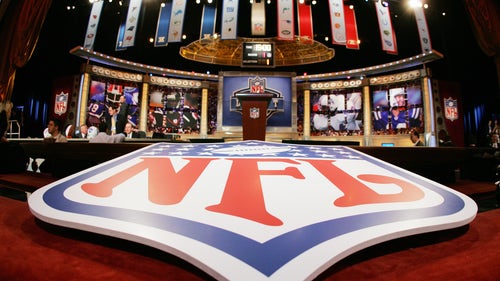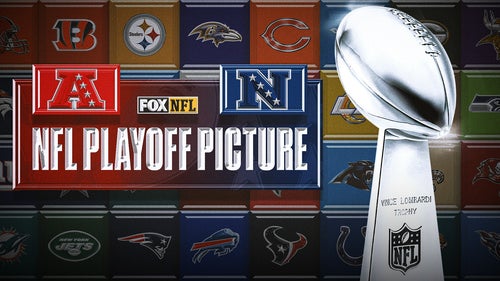
Don't expect new rules for blocks
Although the NFL’s competition committee will take a close look at the controversial plays that ended the seasons of San Francisco nose tackle Ian Williams and Miami Dolphins tight end Dustin Keller, that doesn’t mean proposed rules changes are on the horizon in 2014.
Competition committee chairman Rich McKay said Wednesday his group decided earlier this year against advocating NFL team owners to ban the kind of low block that Seattle Seahawks guard J.R. Sweezy placed on Williams in last Sunday’s game.
Sweezy dove directly at the legs of an unsuspecting Williams from the side while both were moving along the line of scrimmage. Williams suffered a broken ankle, prompting 49ers teammate Patrick Willis to lobby the NFL to force blockers to “hit like rams.”
“I feel like that's something the league should look into more,” Willis told CSNBayArea.com after the game. "You see some of that stuff and it's uncalled for. … Hit the man up high. It should be a good collision.”
Offensive coaches have expressed concern that banning most or all blocks below the knees at the line of scrimmage would severely damage the ability to mount a successful running game. McKay also pointed to the NFL prohibiting certain types of chop-blocks and peel-back blocks in recent years to better protect defenders and improve player safety.
“We brought in offensive line coaches, defensive line coaches, defensive linemen and linebacker coaches this year to the competition committee to talk about cut blocking, that very play (involving Williams) and those types of plays,” McKay said while attending a Wednesday safety meeting at NFL Headquarters in New York City. “We really came out recommending no change.
“Do I think you’ll go back and talk about it again? You will. We’ve talked about it numerous times and made a lot of changes in close-line play over the years … It doesn’t mean there won’t be more.”
McKay also sympathizes with Keller, whose career is in jeopardy following last month’s devastating low hit by Houston safety D.J. Swearinger in last month’s preseason game.
Swearinger said he struck Keller low because he didn’t want to risk drawing a fine for a hit to the helmet area. Keller suffered a major knee injury as a result.
The play prompted questions about whether more could be done to protect a receiver in certain situations like prohibiting low tackles.
“Every year or so, we end up with a low hit that doesn’t look good with a really bad result for the player,” McKay said. “We’ll go back and look at it again. But you do have to give the defender a place to hit. That’s why we’ve left it alone.”
It takes at least 24 of 32 teams to approve a rules change recommended by the eight-member competition committee that consists of current head coaches, general managers, front-office executives and owners.
Here's a roundup of what else was discussed Wednesday:
— Tampa Bay safety Dashon Goldson isn’t just costing himself money with his propensity for headhunting.
The Buccaneers also will likely pay a price largely because of Goldson’s infractions.
Goldson successfully appealed his one-game suspension for a helmet-to-helmet hit on New Orleans Saints running back Darren Sproles. But as FOX Sports first reported, Goldson still was fined $100,000 for that transgression.
An independently assigned arbitrator from the NFL and NFL Players Association also denied Goldson’s appeal of a $30,000 fine for a hit toward the head area of New York Jets tight end Jeff Cumberland in the season-opener.
According to the NFL’s club remittance policy regarding player safety, the fine amount for each “covered infraction” such as impermissible use of the helmet counts towards a team total for the entire season. Any franchise that exceeds $105,000 in fines for covered infractions during the 2013 season must remit $50,000 to the NFL. If the season total reaches $157,500, the franchise must remit an additional $25,000 and match any subsequent fine or suspension amounts.
The most that a player fine or suspension can count against the team total is $50,000.
Goldson’s two infractions count $80,000 against Tampa Bay’s 2013 total.
Just two games into the season, the Buccaneers currently stand at $87,825 under the remittance policy as linebacker Lavonte David was fined $7,825 for a hit on a defenseless player (Jets quarterback Geno Smith) in Week One. It’s unknown whether David has or will appeal the fine.
The Bucs signed Goldson to a five-year, $41.3 million contract as a free agent from San Francisco during the offseason.
McKay believes the NFL is making progress toward reducing helmet-to-helmet hits. But he also admitted it will “take a couple of years to change the culture” with head-hunting techniques ingrained in some veteran defenders from a time when such measures weren’t as strongly discouraged.
— The NFL’s “Heads Up Football” program partnership with USA Football advocating proper tackling techniques and concussion awareness for youth players was far more popular than the league expected.
Jeff Miller, who is the NFL’s senior vice president of health and safety, said there are 2,800 leagues involved encompassing more than 600,000 players and 90,000 coaches. The pilot program initially called for participation of 100 youth leagues.
“We actually cut off the program in terms of sign-ups this year for purposes of quality control and to make sure that it would be done correctly,” Miller said. “The last thing we want to do is advertise numbers we can’t support.
“Next year, we’re going to look to get to all 10,000 across the country. We want youth football unified in a way that it’s taught safer and better.”
— The NFL will help petition the Mississippi legislature in January to adopt the Lystedt Law concussion protocols, Miller said.
Under the law, all athletes, parents and coaches must annually receive mandatory education about the perils of concussions and signs that a player could be affected. Any athlete who is suspected of having suffered head trauma must be immediately removed from the game or practice and is barred from returning until receiving medical clearance from a licensed health-care professional.
Mississippi is the only state that hasn’t adopted the Lystedt Law since the league began sponsoring a nationwide push in 2010. The law is named after Zack Lystedt, who suffered brain damage during a youth football game after concussions he suffered weren’t properly diagnosed or treated.
— Next week the NFL will release its 2013 Player Health and Safety Report, which touts improvements and efforts by the league to make football safer through a litany of initiatives.
The report comes at a time when the game is facing scrutiny from a lawsuit filed by more than 4,500 former players who claim the league didn’t properly diagnose or inform them of head trauma suffered during their NFL careers.
The plaintiffs and NFL reached a $765 million settlement last month, but that doesn’t mean the league will curtail its efforts to prevent and properly treat head trauma among former and current players.
As part of a $30 million NFL donation, the National Institutes of Health will announce in October the first winners of grant money toward the study of chronic traumatic encephalopathy, which is a degenerative disease caused by repetitive head trauma. The league also has a $60 million partnership with General Electric and Under Armour aimed at developing technology toward such health initiatives as safer helmets and ways to better diagnose head trauma.
NFL commissioner Roger Goodell is well aware of criticism by anti-football advocates stemming from the toll the sport has taken on the physical and mental well-being of some former players as well as deaths that annually occur at the youth, high school and sometimes college levels. Goodell, though, was adamant Wednesday that “this game is safer and better than it has ever been.”
“It’s important work for us and stuff that we have been very focused on,” said Goodell, who has designated 15 NFL committees and sub-committees to address health-related issues. “I think we’re making significant progress.”










